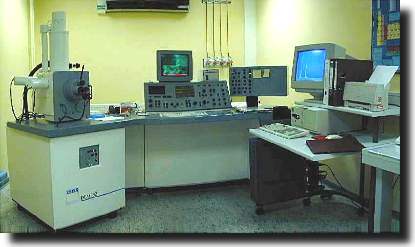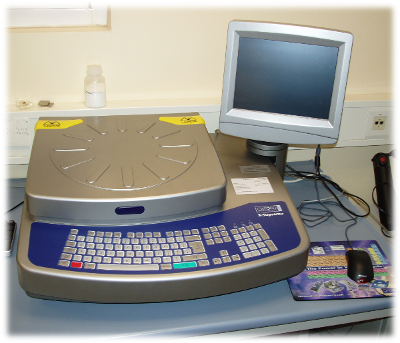Microscopy and elemental analysis
Mandy Turski
T +49 (0)355 69 3748 F +49 (0)355 69 4183 Mandy.Turski@b-tu.de
Electron microscopy
ZEISS DSM 962 Digital Scanning Electron Microscope
The existing equipment allows not only structural aspects but also elemental analysis to be performed. For this purpose, in addition to the secondary electron detector (SE) for imaging the sample topography, a backscatter electron detector (BSE) for imaging elemental contrasts and an EDX system (Energy Dispersive X-ray Fluorescence Analysis ab Na) from Oxford Instruments are available. The EDX system allows us to perform qualitative and quantitative elemental analyses as well as to generate elemental distribution images(imaging methods).
For electron microscopic analysis, the samples must be dry and vacuum stable. In many cases air-dried or freeze-dried material is sufficient. Biological material is chemically fixed, dehydrated and subjected to critical point drying for better structural preservation. Samples usually need to be made conductive for examination. For this purpose, ZAL offers sputtering or vapor deposition options with metal or carbon. However, it is also possible to examine non-conductive samples at low acceleration voltages of 0.5 to 5 kV. For qualitative element measurements, plane and polished sections of the sample material are excellently suited, either directly or after prior embedding, e.g. in epoxy resin. We produce these preparations ourselves or arrange a suitable workshop for larger objects. The main focus of our investigations are environmental and technical specimens e.g.: Boderarthropods, plankton, plant material, soil litter samples, soil sections, minerals, technical filter material, plastics, natural fibers, archaeological samples, ashes...
Elemental analytics
XRF analysis (Oxford)
This instrument provides us with energy-dispersive X-ray fluorescence analysis for the non-destructive analysis of elements from sodium onwards in solids (and liquids). Using a standardization program (fundamental parameters), up to 20 elements can be quantified at once, even in complicated samples.Application examplesHalogen content ofwaste oil, heavy metal content of plastics, total contents in ashes, soil, plants, metal alloys, analysis of plankton on filter material, etc.
Sample preparationWhenpreparing samples of solids such as soil samples, utmost importance should be attached to careful grinding of the samples. The particle size should be <63 µm. for soil samples. The sample material is then measured as a pressed pellet (15 t, with the addition of binder) or as a bulk sample. The quality of the quantitative analysis on pressed pellets or on bulk samples is quite comparable with lithium borate melt tablets.


